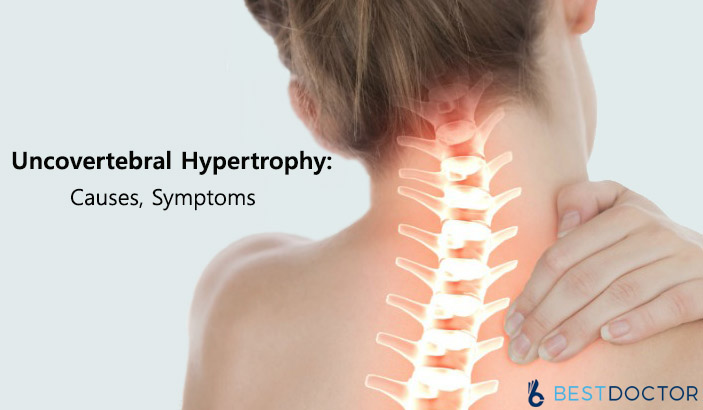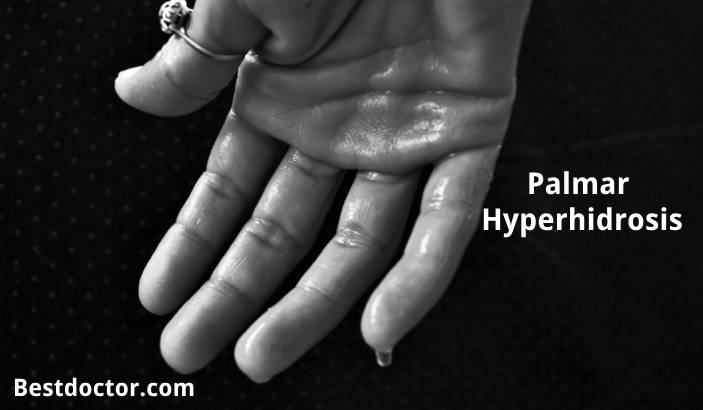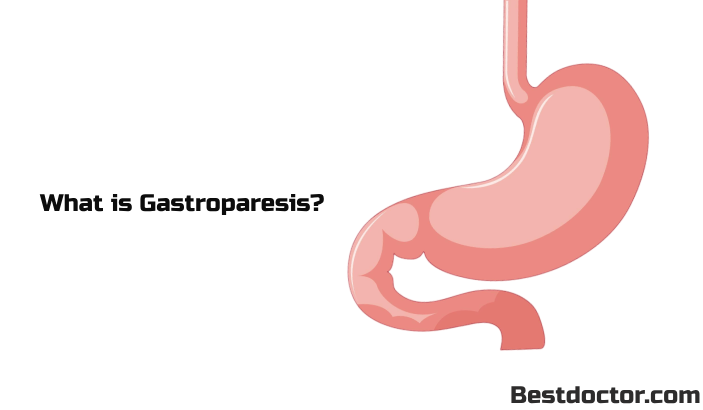What Is Uncovertebral Hypertrophy?
On the inferior surface of the superior vertebral body and upper surfaces of the bodies of the lower cervical vertebrae if there are enlargement of small synovial joints then it is called Uncovertebral Hypertrophy. The common symptoms of degenerative neck disease are pain and enlargement of neck joints.
Uncovertebral joints are comprised of bone and cartilaginous materials. The cartilage which are present between the uncovertebral joints contracts as one gets older. This causes bony overgrowth between contributing to foraminal narrowing and joints. The nerve roots during an early in degenerative disc disease normally passesvia a portion of the neural foramina, which are not affected by this bony overgrowth, nonetheless with compression of the nerve roots and passage of time, pain is the end result.
The normal process of aging are the degenerative neck joints changes because of the neck’s everyday wear-and-tear movements. Neck has seven cervical vertebrae which is disconnected from the next by the cartilage disc. These discs are the shock absorbers of the neck and convert less effectively as a person ages.
According to Medscape, neck and back pain are a chief health problem. It is assessed that 85 percent of people have some type of back or neck pain in their life. Degenerative disc disease cannot be stopped through exercise or diet, nonetheless symptoms can be achieved and treated over medications, surgery, and physical therapy.
Uncovertebral joint Luschka is a recurrent cause of tingling in hands and arms. It is a slim piece of bone that is simply injured and fractured in whiplash injuries, particularly if you are T-boned. Then it progressively becomes arthritic with tiny spurs inflowing the intervertebral foramen.
Paresthesias in the upper limb, frequently with a deep radiating ache, and an entire spectrum of situations like rotator cuff syndrome, frozen shoulder, and carpal tunnel are recurrent complaints experienced by the patients.
The source of them lies very often in the so called UncoVertebral Joints, called after a German anatomist, Hubert Luschkafrom more than 150 years ago.
In The Spine, There Are Three Joints Between The Vertebrae
- One disc
- Two facet
- UncoVertebral Joint Luschka
Although, in the lower cervical spine, between the lowermost five bones C3, C4, C5, C6 and C7 are four extra pairs of joints whichlet forward flexion and neck rotation, whereas limitinglateral flexion and lateral translation. The movements which happens in a side-on that is broadside, T-bone collision whiplash. Otherwise, which happens if your head and neck were turned in a rear-end collision.
These four pairs of joints have been given numerous names: UncoVertebral joints, Joints of Luschka, neurocentric joints, paracentric joints and others.
The Uncus or Uncinate Process
Next to the lateral edge of the vertebral body, small bone ridges extend upwards creating a joint between the vertebral body above and uncinate. Anatomists claim about the true nature of the UncoVertebral Joint Luschkanonetheless on the whole, there appears agreement that they are synovial joints.
The inner (medial) surface of the uncus is enclosed with conventional hyaline cartilage as is the corresponding undersurface of the vertebral body side where a concave area is also ruled with cartilage. The joint of Luschkais enclosed with a synovial membrane which comprises the synovial fluid that transports nutrients to the hyaline cartilage which is lining the joint surfaces.
Clinical Significance Of Uncovertebral Hypertrophy
The term “neurocentric” joint is frequently used today because of the important relationship between mixed nerve root and the Joint of Luschka, comprising both outgoing motor nerves and incoming sensory input.
From now, any bilateral uncovertebral hypertrophy can cause both tingling in hands, arms, arm pain, and weakness in the hands and arms.The Luschka joints, which are in yellow, stay just in front, inside and anteriorly, also medially, of the nerve root, which is in blue.
Similarly, the joint might be defined asvasculo centric joint, though it isnot. The uncovertebral joint luschkastays just behind, medial and posteriorly to the vertebral artery, which are in red, providing oxygenated blood to the brain posterior part. Thus, the uncovertebral joint Lushka has also the possibility to cause vascular brain symptoms like vertigo.
The vertebral body, the disc together with the Joints of Luschka, becomes the foramen anterior wall via which the spinal nerve travels. The uncus in fact offers some nerve root protection from any disc herniation.
In theory, the close relationship between the Vertebral artery and UncoVertebral Joint Luschkacould have some clinical significance, by way of it definitely does for the spinal surgeon. 1/1,000 neck operations result in death frequently because of this vital relationship between the Joint of ofLuschka and the vertebral artery. Millions of cervical spines are worked out every day by chiropractors, many with UncoVertebral Joint arthrosis with no result on the Vertebral artery.
Those tremendously rare (1/ 5,000,000) cases where Stroke Chiropractic does seem to be rather to do with the twisted course of the Vertebral artery in the upper cervical spine.
What Are The Causes of Uncovertebral Hypertrophy?
Uncovertebral hypertrophy can be caused by many factors. Rheumatoid arthritis can cause the lining of joints to be swollen and inflamed. Or, the joints cartilage can wear away, which is mentioned as facet joint osteoarthritis. Once the cartilage disappears, the body recompenses by extra bone growth on the joints defined as bone spurs. These bone spurs can make it appear as if the joints are larger and thicker in a few areas. Therefore, either by extra bone growth or inflammation, facet joint “enlargement,” or “hypertrophy,” can happen.
What Are The Symptoms Of Uncovertebral Hypertrophy?
The pain of facet joint hypertrophy does not appear from the inflammation itself, nonetheless slightly from the inflammation effect has on surrounding spinal nerves. The vertebrae are enclosed by openings defined as foramina, via that our spinal nerves pass on their way to and from the sensory organs and muscles.
The swelling of uncovertebral hypertrophy can press on these nerve passageways, compelling the nerves to become restricted. This is why symptoms can frequently be “mentioned,” which defines they seem in places that are far from the damage site. For example, even though you may have uncovertebral hypertrophy in your lower back, the pain and numbness can spread all the way via the leg and buttocks.
What Is Right Uncovertebral Hypertrophy?
Right uncovertebral hypertrophy is a kind of a spinal disorder. Like sclerosis, it comprises the narrowing of spine parts. This can cause meddling with the spinal cord, leading to pain. You should see a physician/chiropractor immediately if you experience it.
What Is The Treatment Of Uncovertebral Hypertrophy?
Traditional treatments, such as physical therapy and pain medication, can achieve many cases of compression of nerve compression because of bone spurs. you can consult the best doctor to find the best kind of nonsurgical treatment for uncovertebral hypertrophy depending on your medical history and condition. If chronic pain continues after several months of traditional treatment, a doctor may recommend surgery as an option. Also getting a second opinion from a well-knownphysicianmake you feel at peace in mind. You can also ask a doctor online who are specialized in this field. This will help you to be certain that you have considered all the choices and that you or your loved ones are taking the right choice for the health.
[cl-review quote=”Medically Reviewed By” author=”Dr. Kaushal M. Bhavsar (MBBS, MD)” occupation=”Assistant Professor in Pulmonary Medicine, GMERS Medical College, Ahmedabad” avatar_image=”1325″ source=”url:https%3A%2F%2Fwww.linkedin.com%2Fin%2Fdr-kaushal-bhavsar-a8137355%2F|target:_blank”]








One Reply to What Is Uncovertebral Hypertrophy? Causes, Symptoms And Treatment
What the best treatment for unconvertebral?
Enhancing Your Career Opportunities with Improved Vision from LASIK Surgery in Manhattan
What Does Cloudy Urine Mean in Females and Males?
Palmar Hyperhidrosis: Understanding Causes, Symptoms, and Treatment
16 Warning Signs You Need to Go See Your Doctor As Early As Possible